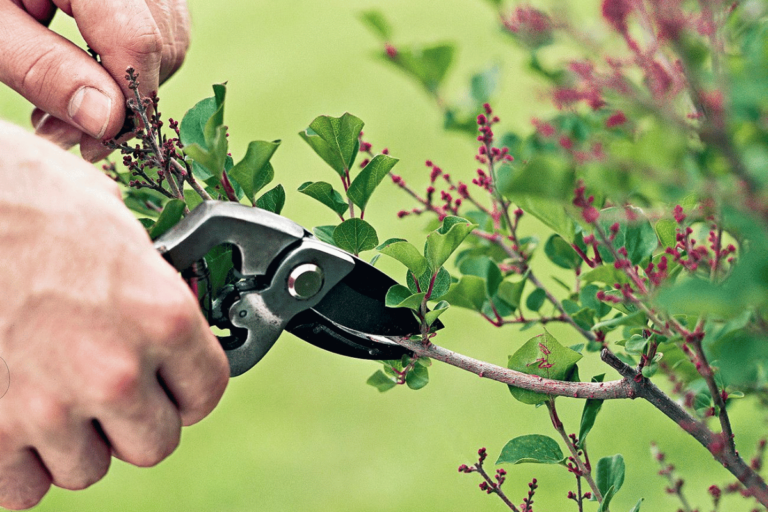Why Pruning is Important
One method applied in gardening to boost the health, shape and productivity
of a plant is cutting away some parts of the plant that are not needed. These
may include branches, leaves or even stems, depending on the type of plant. The
advantages of pruning trees and shrubs include increased growth, flower and
fruit production, and better air movement. Appropriate pruning can also
minimize risks for diseases, reduce chances of wind damage and support the
desired size and form of the plant.
Health Benefits
Another reason people prune plants is to remove dead branches affected by
disease or damage. This process prevents the spread of the disease by killing
these sickly regions so that they do not infect other parts of that tree.
Example: It could be observed that removing diseased apple tree branches
will help to prevent widespread infection from a common fungal disease such as
apple scab.
Growth Stimulation
Pruning also encourages new growth by sprouting new shoots or branches. As a
result, it makes fuller, more attractive plants when done correctly. Pruning
can direct energy towards stronger and healthier growth, making it more robust in
development.
Example: The rose bush grows more flowers after being pruned because it
stimulates new cane growth.
Structural Integrity
Trees and shrubs can improve their structure by pruning them. It reduces
breakage cases by eliminating weak or crossing limbs while promoting robust,
balanced frameworks, thus attaining this goal. Young trees mainly rely on
appropriate pruning since their long-lasting healthy growth depends on the presence
of a viable framework created then.
Example: When young trees are pruned by removing competing leaders, it helps
develop one single trunk, thus reducing the impact of future storms.
Pruning Techniques for Healthy Plants
Pruning techniques differ according to the type of plant being worked on and
what one intends to achieve after the activity. Some standard pruning
techniques include thinning, hedging and rejuvenation pruning.
Thinning
Removing entire branches or stems is sometimes necessary to improve air
circulation and light penetration. This method is primarily used in small trees
and shrubs with compact structures.
Example: Thinning dense trees like lilac enhances air circulation, reducing
chances for powdery mildew.
Heading
This method involves cutting back the terminal tips of branches to encourage
denser growth. Mostly, this technique is done with hedges, shrubs, and young
trees, thus forcing them to become more compact and dense. Cut above a bud or
lateral branch to stimulate new growth.
Example: When we head branches of boxwood hedge, its growth becomes uniform
and very thick.
Rejuvenation Pruning
One way of addressing this problem is by resorting to rejuvenation pruning,
which requires one to cut back these older, overgrown bushes from their bases
so that they start developing afresh. This approach suits plants that are
elongated or no longer produce. Cut the shrub back, leaving a few healthy buds
or shoots at 6-12 inches high above ground level, giving rise to new vigorous
shoots.
Example: An old forsythia can be pruned back completely, stimulating
vigorous new shoots and rejuvenating the plant.
Pruning Best Practices:
Ensure clean cuts during pruning, and tools must be sharp enough because
blunt ones may spread diseases among plants since they tear instead of cutting
straight through branches. Cutting should be carried out at an angle just above
buds or side branches to heal faster while minimizing invasion by viruses.
Avoiding leaving stubs where pests could infest by attracting them also
prevents pathogens such as bacteria from entering through open wounds caused by
unprofessional trimming jobs conducted on tender stems like those found in a
rose’s flower head. Most trees and shrubs should be pruned when resting, but
exceptions are made for periods of active growth or extreme weather conditions.
Conclusion
Pruning is an essential practice as a method of maintaining healthy trees
and shrubs. Knowing the right way to prune you will help make your plants
beautiful and live longer. It encourages good growth, prevents diseases, and
produces strong structures. Irrespective of whether you are taking care of a
tiny bush or a big tree, correct pruning will ensure that your plants prosper,
making your garden look great all the time.
Explore More Gardening Tips and Ideas
Source: The Art Of Pruning Trees And Shrubs


